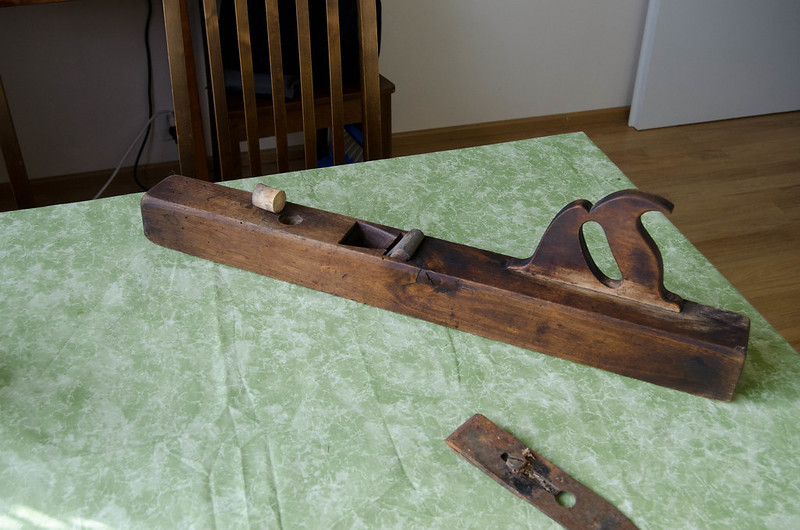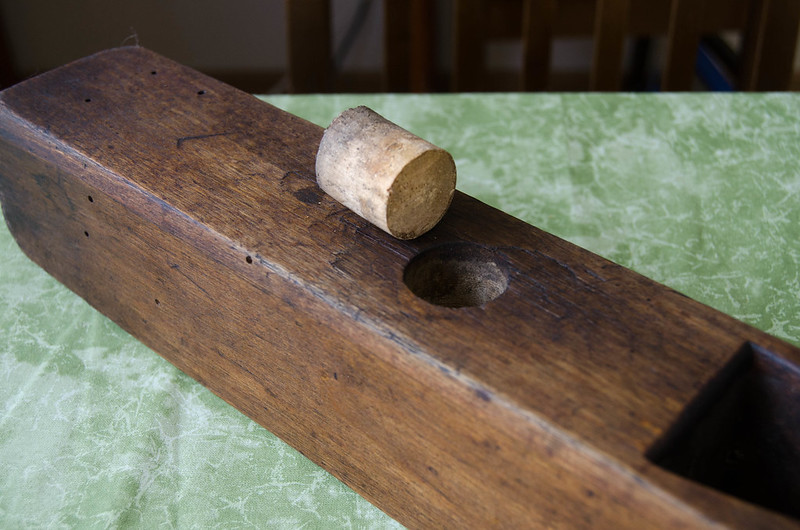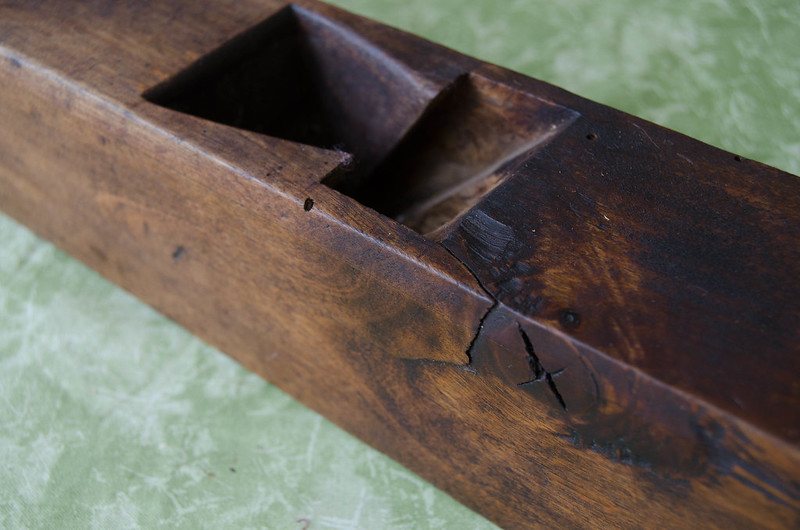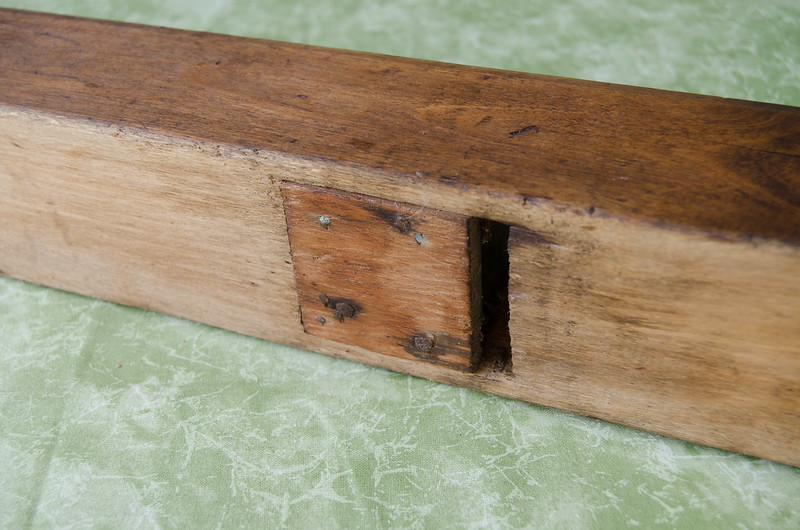Bought a wooden jointer plane for a few euros, arrived yesterday, seller claimed it was over 100 years old.
After an initial cleaning with tung oil and steel wool:

I have no idea what role this dowel and hole serve, lots of tiny holes too in the front, no idea why:

Iron, pretty rusty but I think it's fixable:

Here's a crack on the side where the iron and wedge goes in. I have been wondering how to fix it, I was considring getting some glue into the crack and clamp it shut, then drill a hole and ram a glue covered dowel into it for good measure. No idea if that's a viable solution or not.

There's an insert in the sole, it has nails sticking out. Looks like they first put it in with nails that they cut the heads of, then someone hammered more nails in afterward. The nails protrude so this is pretty useless as is. I am thinking I'll have to make a new insert, not sure whats the best way to attach it. Just gluing it in place, or using dowels again.
Perhaps screws that are deeply countersunk into the insert?

After an initial cleaning with tung oil and steel wool:

I have no idea what role this dowel and hole serve, lots of tiny holes too in the front, no idea why:

Iron, pretty rusty but I think it's fixable:

Here's a crack on the side where the iron and wedge goes in. I have been wondering how to fix it, I was considring getting some glue into the crack and clamp it shut, then drill a hole and ram a glue covered dowel into it for good measure. No idea if that's a viable solution or not.

There's an insert in the sole, it has nails sticking out. Looks like they first put it in with nails that they cut the heads of, then someone hammered more nails in afterward. The nails protrude so this is pretty useless as is. I am thinking I'll have to make a new insert, not sure whats the best way to attach it. Just gluing it in place, or using dowels again.
Perhaps screws that are deeply countersunk into the insert?

































